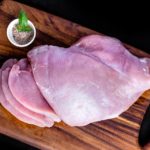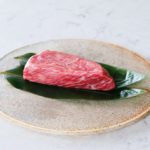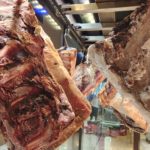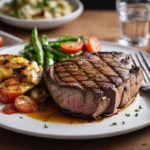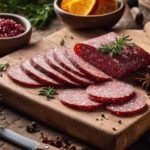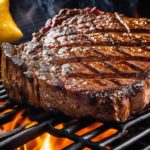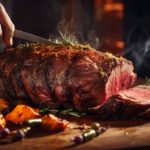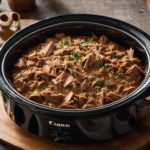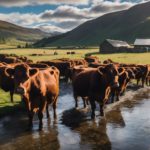I am here to present to you “The Ultimate Guide to Dry Ageing Prime Rib for Tender Perfection.” In this article, I will share with you all the essential steps and techniques to achieve the most succulent and flavorful prime rib through the process of dry ageing.
We will explore the science behind this method and provide you with practical tips and tricks to ensure your prime rib is nothing short of perfection. So, grab your apron, prepare your taste buds, and let’s embark on a mouthwatering journey into the world of dry age prime rib.
What is Dry Ageing?
Definition of Dry Ageing
Dry ageing is a technique used to enhance the flavor and tenderness of meat, particularly prime rib. It involves placing the meat in a controlled environment with specific temperature and humidity conditions for a certain period of time. During this process, the meat undergoes natural enzymatic and chemical reactions, allowing it to develop a unique depth of flavor and a tender texture.
Why Dry Ageing is important for prime rib
Dry ageing is particularly important for prime rib because it allows the meat to reach its maximum potential in terms of flavor and tenderness.
The process helps to break down the proteins and connective tissues in the meat, resulting in a more tender and juicy cut. Additionally, the dry ageing process enhances the natural flavors of the meat, creating a rich and intense taste that is highly sought after by meat enthusiasts.
Choosing the Right Prime Rib
Selecting the cut
When choosing a prime rib for dry ageing, it is important to select a cut that has a generous amount of marbling and a good amount of fat cap. This marbling refers to the intramuscular fat that appears as white streaks throughout the meat. The fat cap is the layer of fat that covers the top of the prime rib. These two factors contribute to the tenderness and juiciness of the meat during the ageing process.
Determining the grade
Prime rib is available in different grades, such as Prime, Choice, and Select. The grade of the meat is determined by its marbling and overall quality. It is advisable to choose a higher grade of prime rib, such as Prime or Choice, as these tend to have better marbling and thus produce more flavorful and tender results after dry ageing.
Considering the marbling
Marbling is a crucial aspect to consider when choosing a prime rib for dry ageing. The marbling plays a significant role in the taste and texture of the meat. Prime rib with a higher marbling content will generally have a more robust flavor and a tender mouthfeel. Look for visible streaks of fat running through the meat, as this indicates a higher marbling content.
Preparation Before Dry Ageing
Trimming the fat
Before dry ageing, it is important to trim excess fat from the prime rib. This includes removing any hard fat and excessive fat cap. While some fat is needed during the dry ageing process to protect and flavor the meat, too much fat can hinder the process and lead to an unpleasant taste. Trimming the fat allows for a more even dry ageing process and enhances the overall flavor of the prime rib.
Seasoning the prime rib
Before placing the prime rib in the dry ageing environment, it is important to season it with salt. Salt helps to draw out moisture from the meat, intensifying its flavors and enhancing the dry ageing process. Apply a generous amount of salt to all sides of the prime rib, ensuring a thorough coating. Let the salt penetrate the meat for at least 24 hours before proceeding with the dry ageing process.
Wrapping the prime rib
Once the prime rib has been trimmed and seasoned, it should be tightly wrapped in a breathable material, such as cheesecloth or butcher paper. This wrapping helps to protect the meat from external contaminants while allowing for proper airflow during the dry ageing process. A tight wrap also helps to prevent excessive moisture loss, ensuring that the prime rib retains its juiciness throughout the ageing period.
Setting Up the Dry Ageing Process
Refrigerator vs Dry-Ageing Cabinet
There are two main options for setting up the dry ageing process: using a refrigerator or investing in a specialized dry-ageing cabinet. Using a refrigerator is a cost-effective option, but it may require some modifications to control temperature and humidity levels.
On the other hand, a dry-ageing cabinet is designed specifically for this process, offering precise temperature and humidity control, as well as proper air circulation. Ultimately, the choice depends on personal preference and the availability of resources.
Temperature and humidity control
Regardless of the method chosen, maintaining the right temperature and humidity is crucial for a successful dry ageing process. The temperature should be kept between 32°F (0°C) and 35°F (2°C) to prevent the growth of harmful bacteria while allowing enzymatic reactions to occur.
The humidity level should be around 70-80%, which helps to retain moisture in the meat and prevents excessive drying. Proper monitoring equipment, such as a thermometer and hygrometer, can be used to regulate and maintain these conditions.
Dry Ageing Duration
Ideal ageing time
The ideal duration for dry ageing prime rib varies depending on personal preference and the desired flavor profile. In general, a minimum ageing time of 21 days is recommended to allow for noticeable changes in tenderness and flavor. However, some individuals may prefer a longer ageing period of 30 days or more, as this allows for more pronounced flavor development. It is important to note that the longer the ageing period, the more intense the flavor becomes.
Factors that affect ageing time
Several factors can affect the duration of the dry ageing process. The thickness of the prime rib plays a role, as thicker cuts may require a longer ageing period to allow for proper flavor development. The desired level of tenderness also influences the ageing time, as some individuals prefer a more tender texture, which can be achieved through extended ageing.
Additionally, the quality of the prime rib and the specific conditions of the dry ageing environment can impact the duration needed for optimal results.
Monitoring and Maintenance
Regularly checking the prime rib
During the dry ageing process, it is important to regularly check the prime rib for any signs of spoilage or mold. This involves visually inspecting the meat and smelling it for any off odors. If any discoloration, sliminess, or unpleasant smells are detected, it is crucial to discard the meat and start fresh. Regular monitoring helps to ensure that the prime rib is ageing properly and prevents the consumption of spoiled meat.
Preventing spoilage and mold
To prevent spoilage and mold growth, it is essential to maintain the appropriate temperature and humidity levels in the dry ageing environment. Proper airflow is also crucial, as stagnant air can contribute to the growth of mold.
The prime rib should be kept away from other foods to avoid cross-contamination. Additionally, practicing good hygiene, such as regularly cleaning the dry-ageing environment and washing hands before handling the meat, helps to prevent the introduction of harmful bacteria.
Benefits of Dry Ageing
Enhanced flavor and tenderness
One of the key benefits of dry ageing prime rib is the enhancement of its flavor and tenderness. The enzymatic and chemical reactions that occur during the ageing process break down the proteins and connective tissues in the meat, resulting in a more tender and melt-in-your-mouth texture. The reduction in moisture also concentrates the flavors, giving the prime rib a rich and intense taste that is unmatched by conventionally-aged meat.
Concentration of flavors
Dry ageing allows the flavors of the prime rib to intensify and become more concentrated. As moisture is slowly evaporated from the meat, the flavors become more pronounced, resulting in a depth of flavor that is highly desired by meat enthusiasts. The ageing process also helps to develop complex flavor notes, such as nuttiness and earthiness, adding another layer of complexity to the taste profile of the prime rib.
Potential Risks and Considerations
Risk of spoilage and contamination
Dry ageing prime rib carries a potential risk of spoilage and contamination if not done properly. The controlled environment must be carefully maintained to ensure that harmful bacteria and mold do not thrive on the meat. Regular monitoring and maintaining the correct temperature and humidity levels are key to preventing spoilage and contamination. It is important to exercise caution and discard any prime rib that shows signs of spoilage or mold.
Dry age shrinkage and loss of moisture
During the ageing process, the prime rib will undergo some shrinkage and loss of moisture. This is a normal occurrence, as the moisture is slowly evaporated from the meat. The shrinkage can result in a reduction in weight and size, which should be taken into consideration when purchasing and preparing the prime rib. While the loss of moisture contributes to the tenderness and concentration of flavors, it is important to be aware of this potential outcome.
Post Dry Ageing
Trimming the crust
After the desired dry ageing period, it is important to trim the crust that has formed on the outer layer of the prime rib. This crust is a result of the moisture loss and acts as a protective layer during the ageing process. Trimming the crust reveals the beautifully aged meat underneath and ensures a more even cooking process. Care should be taken to remove only the outer layer and preserve as much of the aged meat as possible.
Preparing for cooking
Once the crust has been trimmed, the dry-aged prime rib is ready for cooking. It is recommended to let the meat come to room temperature before cooking to ensure even cooking throughout. This can be done by allowing the prime rib to rest outside the refrigerator for approximately one hour. Proper cooking techniques and temperature control are essential to fully showcase the flavors and tenderness achieved through the dry ageing process.
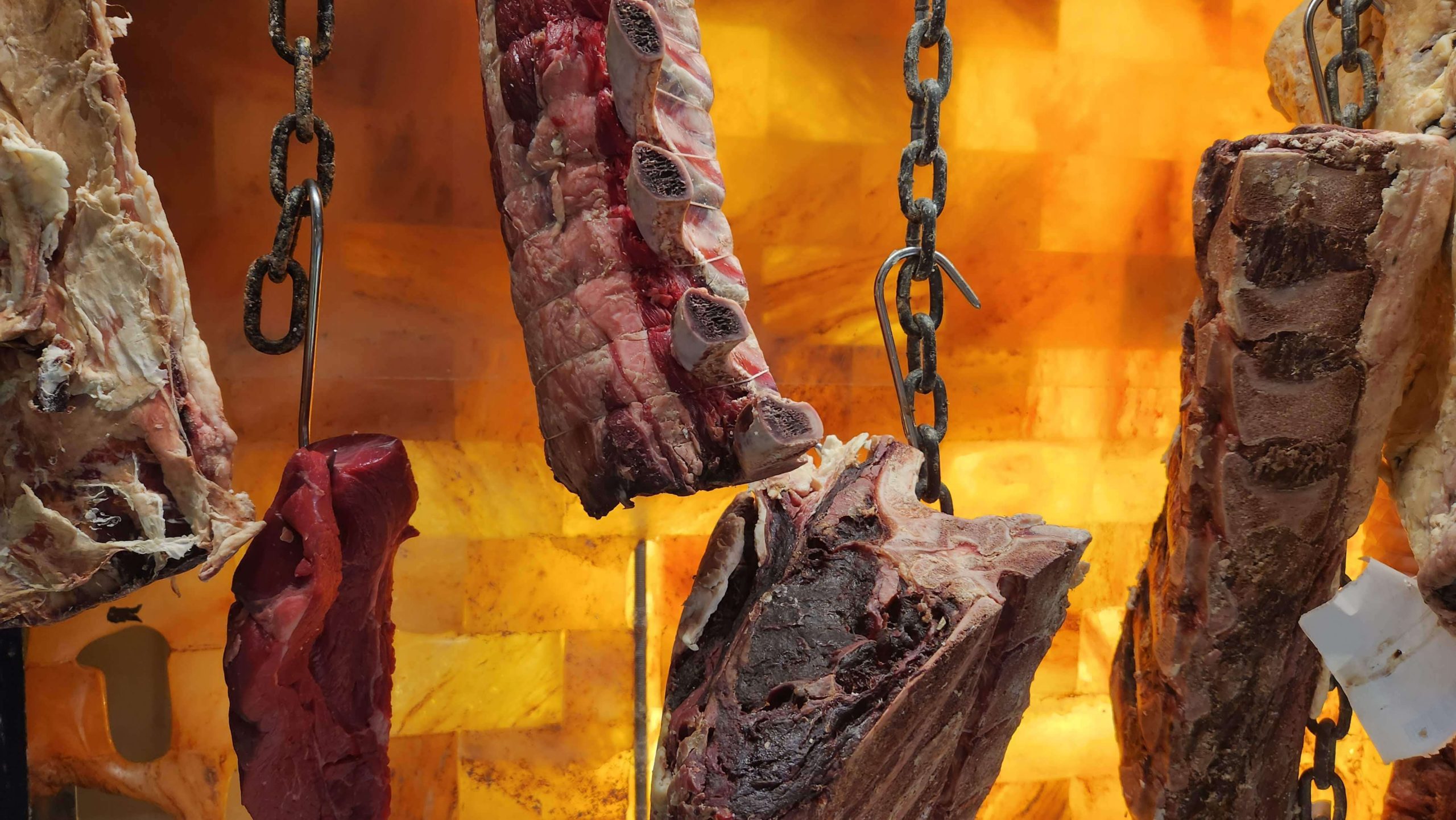
Cooking the Dry-Aged Prime Rib
Choosing the cooking method
When it comes to cooking dry-aged prime rib, there are several methods to choose from. The most popular methods include roasting, grilling, and sous vide. Roasting in the oven is a traditional and reliable method that produces a juicy and flavorful prime rib.
Grilling adds a smoky char to the meat, enhancing its overall taste. Sous vide cooking involves vacuum-sealing the prime rib and cooking it in a water bath at a precise temperature, resulting in unparalleled tenderness and juiciness.
Temperature and cooking time
The cooking temperature and time for dry-aged prime rib depend on personal preference and the desired level of doneness. As a general guideline, a cooking temperature of 325°F (163°C) is recommended for roasting.
The internal temperature should be monitored using a meat thermometer, with a range of 135°F (57°C) to 145°F (63°C) for medium-rare to medium doneness. Cooking times may vary depending on the size of the prime rib, but a rough estimate is around 15 minutes per pound. It is crucial to allow the meat to rest for at least 10-15 minutes before slicing to retain its juices and ensure maximum tenderness.
In conclusion, dry ageing prime rib is a process that requires careful attention and patience, but the results are well worth the effort. By selecting the right cut, preparing the meat correctly, and maintaining optimal conditions during dry ageing, you can achieve a prime rib with enhanced flavor, tenderness, and concentration of flavors.
However, it is important to be aware of the potential risks and considerations associated with the process and to practice good hygiene and monitoring throughout. Once the dry-aged prime rib is cooked to perfection, you can enjoy a truly exceptional dining experience with a melt-in-your-mouth texture and an unforgettable taste.
Greetings!
With over two decades of diverse experience in the meat industry, I proudly stand as an expert in all things meat. My journey commenced with a strong foundation in hospitality, where I honed my culinary skills as a chef in prestigious restaurants and on luxurious superyachts worldwide.
However, my true passion lies in the art of butchery. Throughout my extensive career, I have had the privilege of working with renowned meat purveyors and mastering the craft of meat cutting and preparation. From breaking down whole carcasses to meticulously selecting prime cuts, my butchery expertise is at the core of my meat knowledge.
Having immersed myself in various cultures and cuisines, I have honed my skills to deliver exceptional dining experiences, crafting delectable dishes that celebrate the natural flavors of different meats. Whether it's sourcing the finest meats for discerning clients or sharing valuable tips on meat selection and cooking, I take pride in elevating the meat experience for both professionals and enthusiasts.
My journey has taken me from the bustling kitchens of top-rated restaurants to the heart of meat processing facilities, gaining insights and honing my skills to become a true meat connoisseur. Now, I am enthusiastic about sharing my expertise, offering valuable insights on meat selection, cooking techniques, and the art of butchery.


